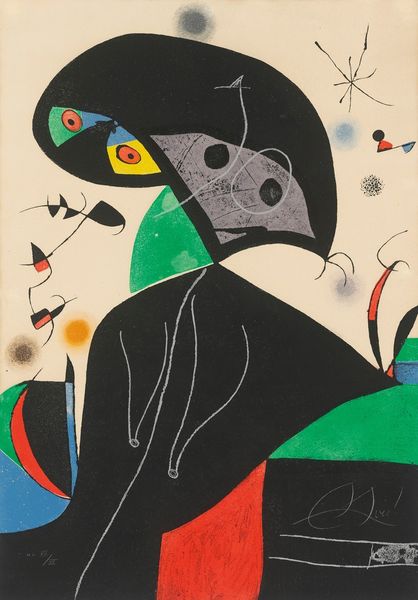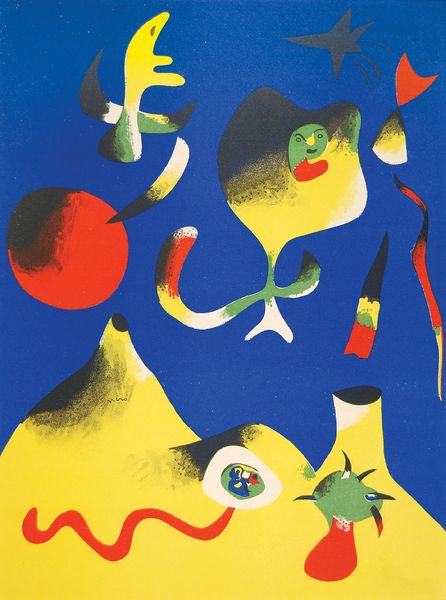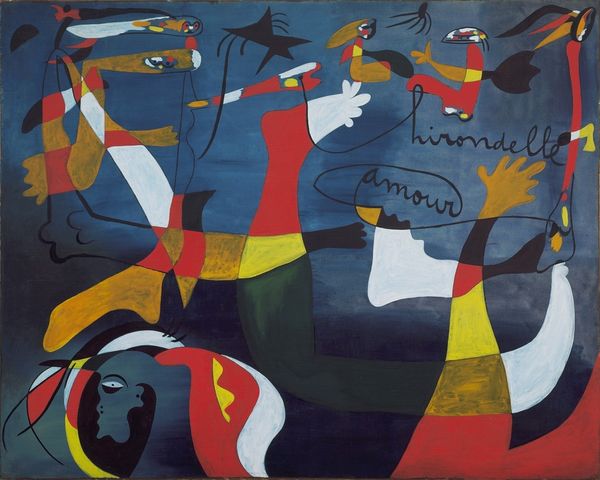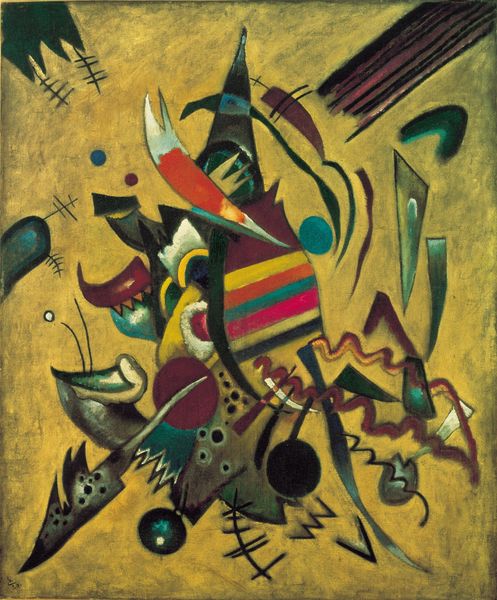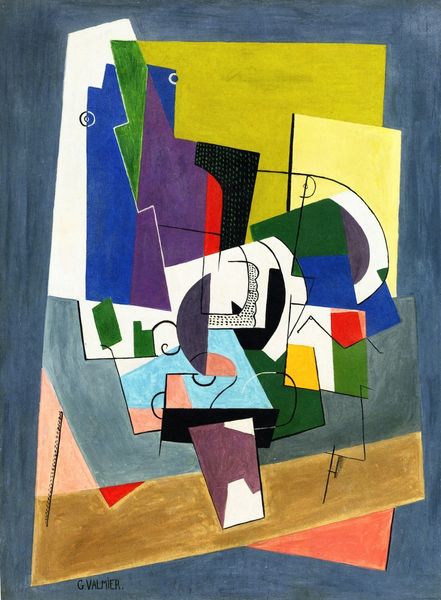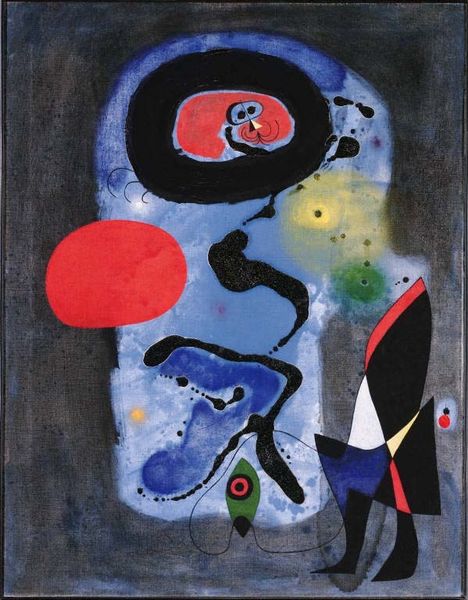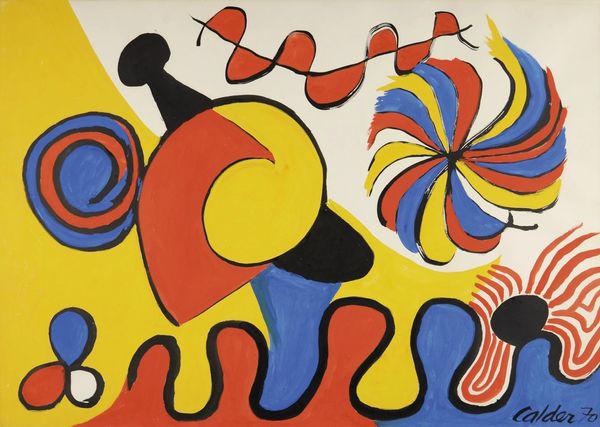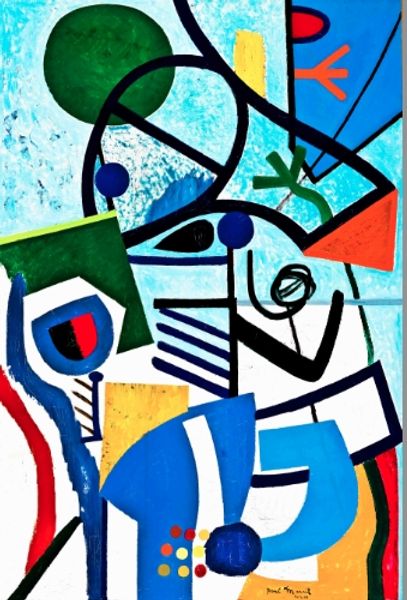
painting, acrylic-paint
#
art-deco
#
organic
#
painting
#
caricature
#
acrylic-paint
#
figuration
#
abstract
#
geometric
#
surrealism
Copyright: Modern Artists: Artvee
Editor: This is "L’Air," or "Air," painted by Joan Miró in 1938. It’s an acrylic on canvas, and the first thing I notice is how playful the shapes and colors feel, despite the looming sense of… well, something. What do you see in this piece? Curator: Playful, yes, but those forms are more than just whimsical. Look closely. Do you notice how many suggest eyes or figures? Even that red circle could be a setting sun, or a bleeding wound. Miró uses symbols, embedded in our collective unconscious. Consider the context of 1938; Europe was on the brink of war, and Miró, while working, was capturing something ominous brewing in the atmosphere. Editor: So the whimsical forms aren't just...whimsical? They're carrying a heavier symbolic load? I guess I just assumed it was pure abstract play. Curator: Miró was deeply interested in primal, universal symbols. Stars, for example, often represented hope or guidance. What does a shooting star signify? Editor: Speed, maybe? Or… warning? Something unexpected? Curator: Exactly. And the distorted figures... Do they feel grounded? Or are they floating, untethered, reflecting the uncertainty and displacement of the time? They are anchored in the past while moving forward, caught in the "air." These symbols don’t have fixed meanings but operate as emotional and psychological triggers, shaped by collective memory. Editor: That changes my perception completely. It’s like reading a dream, not just seeing pretty shapes. I never would have seen so much symbolism in what looked like a fantasy. Curator: Art allows for that duality. Beauty can conceal deeper truths. It reminds us that visual language evolves over time. A form of cultural memory!
Comments
No comments
Be the first to comment and join the conversation on the ultimate creative platform.
